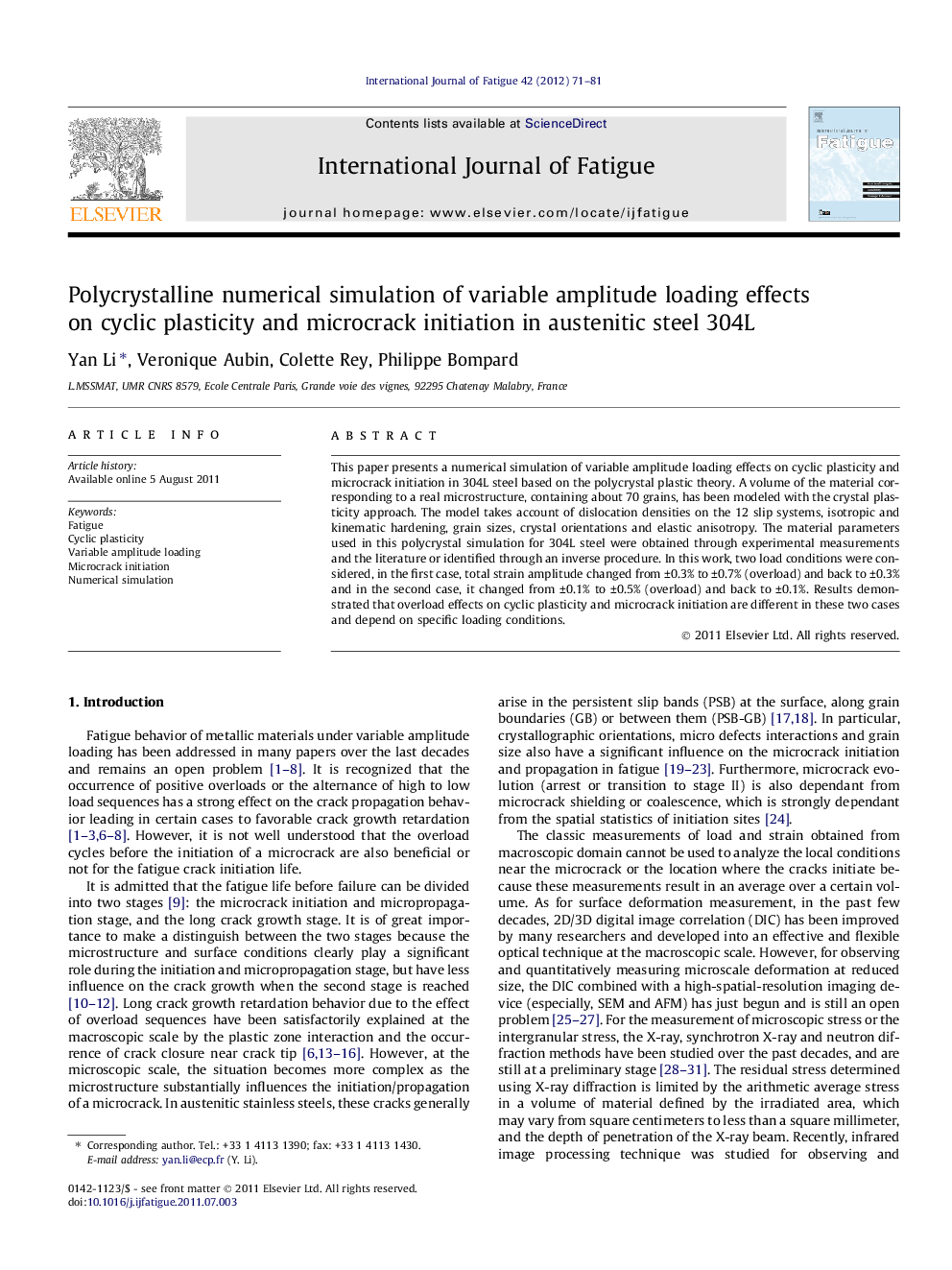| Article ID | Journal | Published Year | Pages | File Type |
|---|---|---|---|---|
| 781049 | International Journal of Fatigue | 2012 | 11 Pages |
This paper presents a numerical simulation of variable amplitude loading effects on cyclic plasticity and microcrack initiation in 304L steel based on the polycrystal plastic theory. A volume of the material corresponding to a real microstructure, containing about 70 grains, has been modeled with the crystal plasticity approach. The model takes account of dislocation densities on the 12 slip systems, isotropic and kinematic hardening, grain sizes, crystal orientations and elastic anisotropy. The material parameters used in this polycrystal simulation for 304L steel were obtained through experimental measurements and the literature or identified through an inverse procedure. In this work, two load conditions were considered, in the first case, total strain amplitude changed from ±0.3% to ±0.7% (overload) and back to ±0.3% and in the second case, it changed from ±0.1% to ±0.5% (overload) and back to ±0.1%. Results demonstrated that overload effects on cyclic plasticity and microcrack initiation are different in these two cases and depend on specific loading conditions.
► A polycrystal FE model was enriched to describe the mechanical behavior of steel 304L. ► Numerical aggregate issued from real EBSD measurements. ► Two loading sequences were tested and compared: 0.3–0.7–0.3% and 0.1–0.5–0.1%. ► Stress and strain maps are more heterogeneous under higher strain amplitude. ► Memory effect depends on the amplitude level of the low amplitude block.
